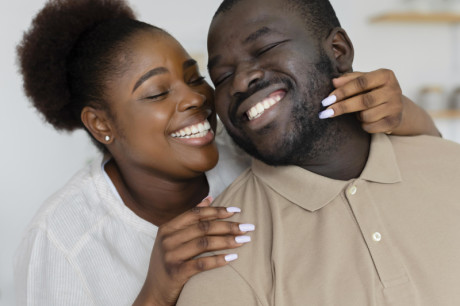Hi,
My name is ChatBot, I am here to make your web experience with NHP amazing.
May I kindly have your first name?
How hearing works
To understand how and why hearing loss happens, it helps to know how the ear works. The ear is made up of 3 different sections: the outer ear, the middle ear, and the inner ear. These parts work together so you can hear and process sounds. The outer ear, or pinna – the part you can see, picks up sound waves and the waves then travel through the outer ear canal.
When the sound waves hit the eardrum in the middle ear, the eardrum starts to vibrate. When the eardrum vibrates, it moves 3 tiny bones in your ear. These bones are called the hammer/ malleus, anvil/incus and stirrup/stapes. They help sound move along on its journey into the inner ear.
The vibrations then travel to the cochlea, which is filled with liquid and lined with cells that have thousands of tiny hairs on their surfaces. There are 2 types of hair cells: the outer and inner cells. The sound vibrations make the tiny hairs move. The outer hair cells take the sound information, amplify it e.g. make it louder, and tune it. The inner hair cells send the sound information to your hearing nerve, which then sends it to your brain, allowing you to hear.
What is hearing loss?
You know what hearing is, but what is hearing loss? Hearing loss or hearing impairment happens when there is a problem with one or more parts of the ear or ears. Impairment means that something is not working correctly or as well as it should. Someone who has hearing loss might be able to hear some sounds or nothing at all. People also may use the words deaf, deafness or hard of hearing when they’re talking about hearing loss.
Types of hearing loss
| Conductive | This happens when there is a problem with a part of the outer or middle ear. Most children with conductive hearing loss have a mild hearing loss and it is usually temporary because in most cases medical treatment can help. |
| Sensory | This happens when the cochlea is not working correctly because the tiny hair cells are damaged or destroyed. Depending on the loss, a child might, hear most sounds, although they would be muffled, hear in quiet but not in noise, hear only some sounds or hear no sounds at all. Sensory hearing impairment is almost always permanent and a child’s ability to talk normally may be affected. |
| Neural | This happens when there is a problem with the connection from the cochlea to the brain. Neural means related to nerve, so neural hearing loss means the nerve that carries the messages from the cochlea to the brain is damaged. |
| Central | This happens when the cochlea is working properly, but parts of the brain are not. This is a less frequent type of hearing loss and is more difficult to treat. |
Causes of hearing loss
Hearing loss is a common birth defect, affecting about 1 to 3 out of every 1,000 babies. A number of factors can lead to hearing loss, and about half the time, no cause is found. Hearing loss can happen because a person was born with parts of the ear that didn’t form correctly and don’t work well.
Other problems can happen later because of an injury or illness, including:
Lots of children have had ear infections, which also can cause hearing loss. Permanent hearing loss is rare from an ear infection, but you need to visit your healthcare provider if you or your child suspect you have one.
Hearing loss can occur if a child:
Hearing evaluation in children
In the first few years of life, hearing is a critical part of your child’s social, emotional and cognitive development. Even a mild or partial hearing loss can affect a child’s ability to speak and understand language.
The good news is that hearing problems can be treated if they’re caught early; ideally by the time a baby is 3 months old. So it’s important to get your child’s hearing screened early and evaluated regularly.
Symptoms
Even if your newborn passes the hearing screening, continue to watch for signs that hearing is normal.
How is hearing treated
The kind of treatment depends on the type of hearing loss, how severe it is, and the child’s other needs. Common treatments include medicine, operations, hearing aids, or other assistive listening devices, which emphasise voices and help children hear better in noisy settings. With treatment, most children will be able to hear normally again.
Hearing aids are kind of like tiny amplifiers. They help someone hear sounds better and can even pick up the sounds so that what children hear is clearer. Hearing aids deliver amplified sounds via sound vibrations from the eardrum and middle ear to the inner ear or cochlea. Hearing aid technology is available that can adjust the volume of sounds automatically
For some children who can’t hear or understand words even with the help of hearing aids, there is a device called a cochlear implant. This is a very tiny piece of electronic equipment that is put into the cochlea during an operation. It takes over the job of the damaged or destroyed hair cells in the cochlea by turning sounds into electrical signals that stimulate the hearing nerve directly.
Reference: The ‘Can Your Baby Hear You’ , B. McCormick, 1982, Children’s Hearing Assessment Centre, Nottingham, UK.
Select and download all application, registration and request forms as well as information on NHP’s designated service providers, tariffs and travel insurance.

These life stages aim to illustrate the thoughtful consideration given to the evolving healthcare needs of individuals at different points in their lives. By aligning medical aid benefits with these life stages, we ensure that our members receive targeted and effective healthcare support throughout their journey.


18-30 years young


31-45 years young


46-60 years young


61+ years young

 Asylum Design & Development
Asylum Design & Development